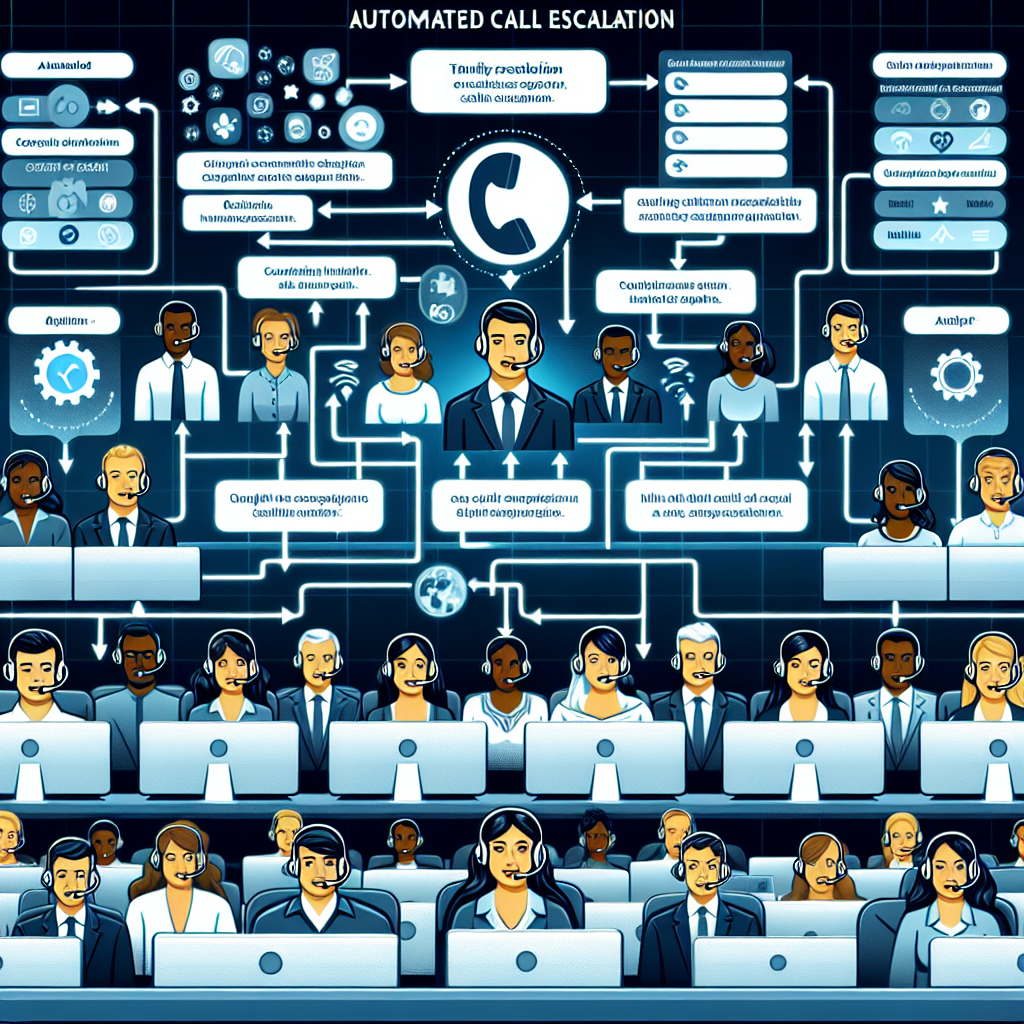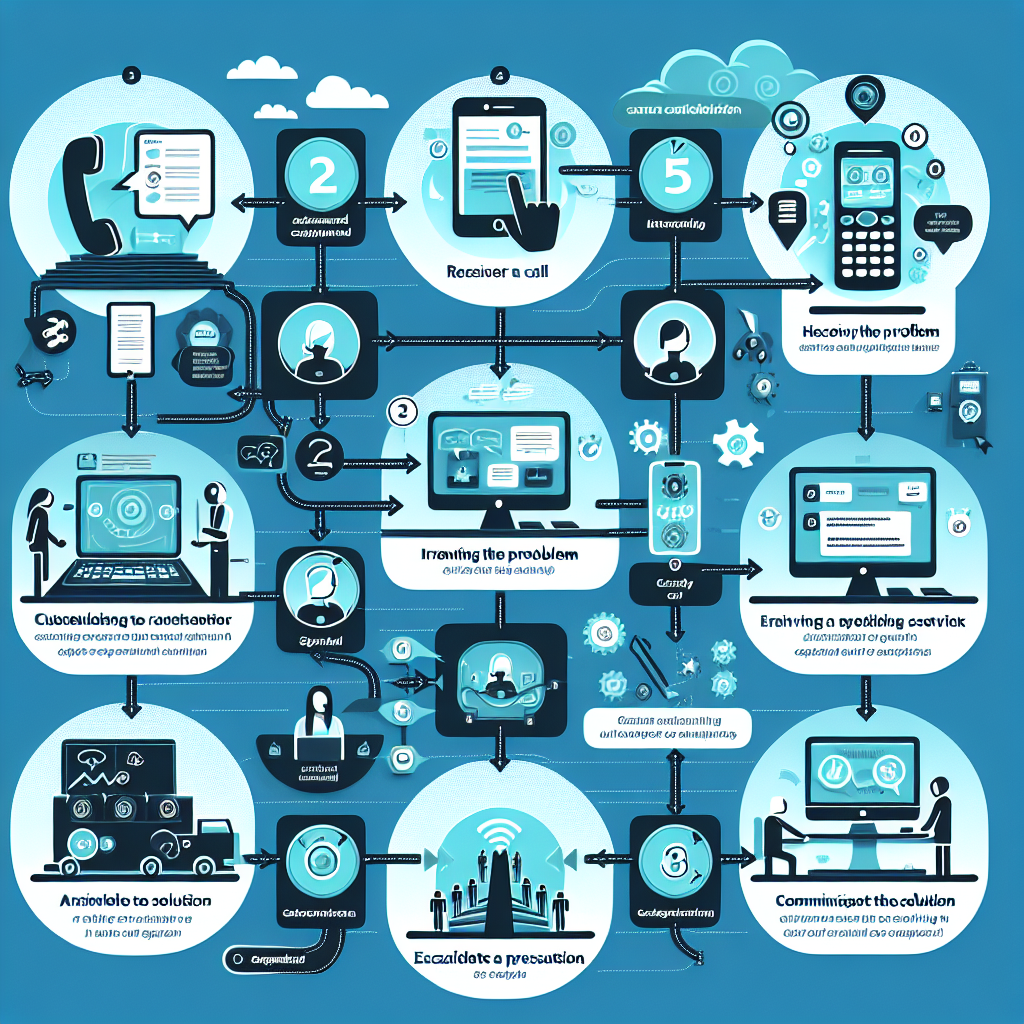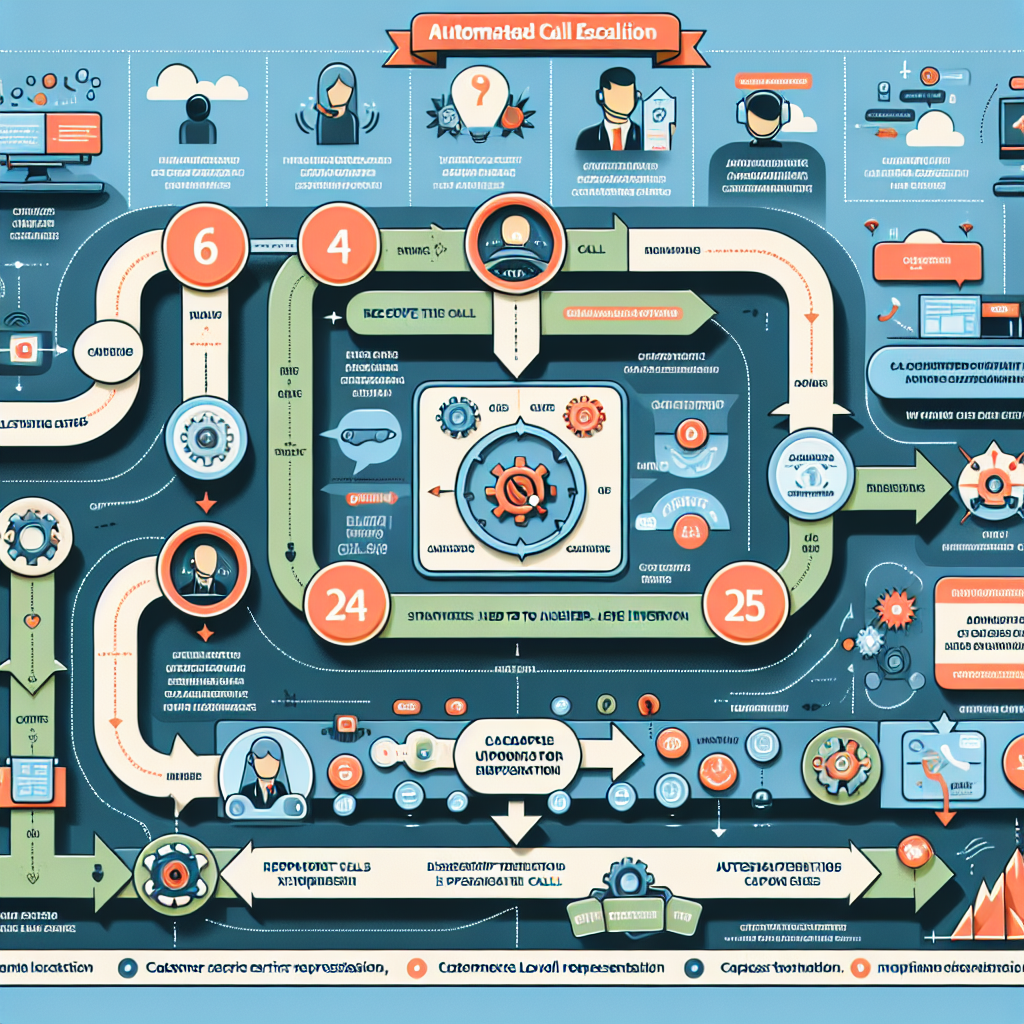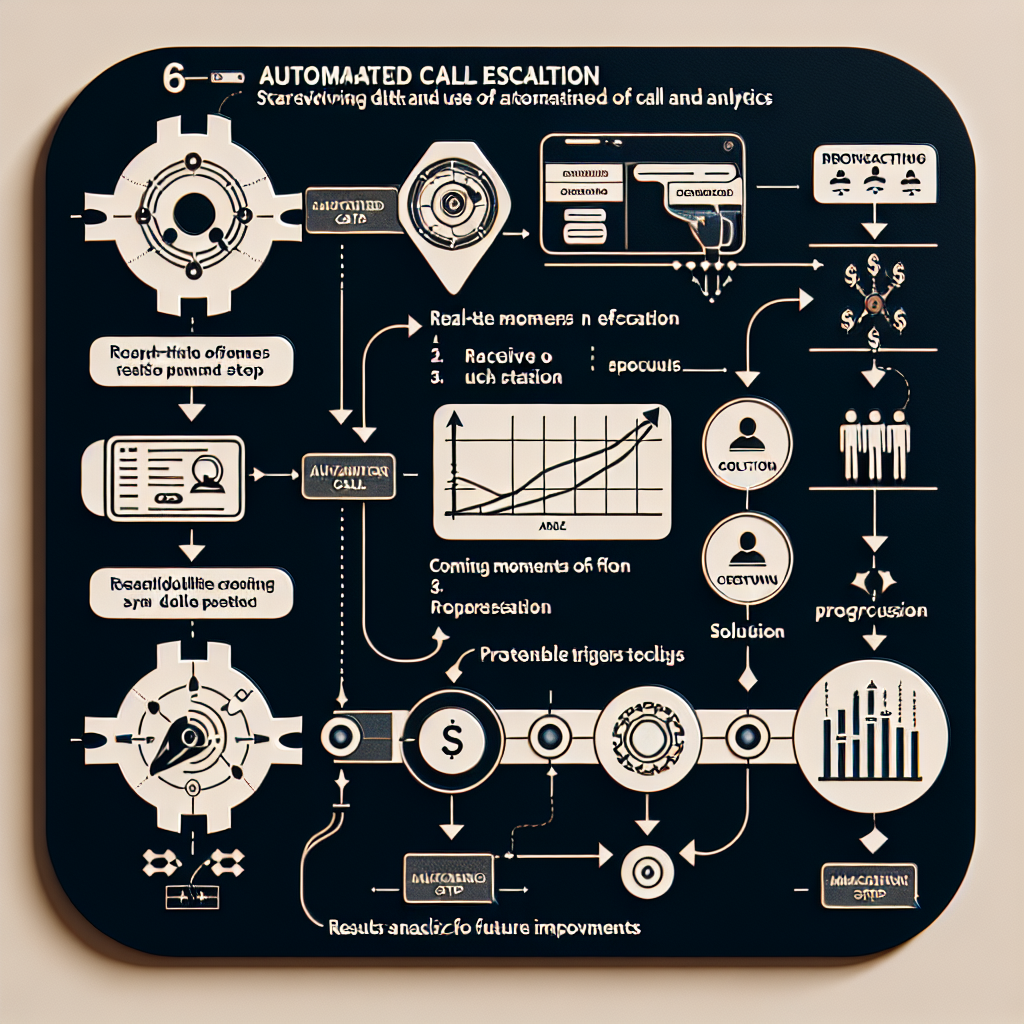
In an era characterized by instant gratification and high customer service expectations, providers face an ever-increasing pressure to deliver quick and effective solutions. One technology that has swiftly risen to this challenge is automated call escalation, a critical feature in modern customer service management systems. The primary function of this technology is to ensure timely and efficient resolution of complex customer issues, thereby directly influencing customer satisfaction rates and brand loyalty.
Boldly adopting a hierarchical approach, automated call escalation is designed to reassign calls that cannot be resolved at lower levels to more experienced customer service representatives or higher-level staff. By doing so, it prevents the customers from waiting in frustratingly lengthy queues and saves their valuable time by efficiently directing their calls to the appropriate expertise.
Automated call escalation can be tuple into two categories: horizontal and vertical. While horizontal escalation involves redirecting the call to a different department within the same level, vertical escalation refers to escalating the issue to a higher level within the same department. This system significantly shortens the response time and improves the overall effectiveness of the organization's customer service.
It's crucial to understand that the efficiency of the escalation process largely depends on the sophistication of the underlying technology and methodology. Consistent monitoring and fine-tuning can significantly improve the system's capability to handle escalations and enhance its impact on your customer interactions.

In conclusion, automated call escalation plays a crucial role in prompt issue resolution, customer satisfaction, and thereby ensuring the general success of any service-oriented business.
As technology advances, businesses everywhere are seeking out solutions that streamline operations and maximize efficiency. One such solution is automated call escalation, an approach that combines the capabilities of artificial intelligence (AI) and machine learning to identify and predict complex customer issues. By leveraging automation, businesses can reduce both the operational burden on their customer service staff and the overall resolution time for customers.
AI and machine learning have transformed the customer service landscape by enhancing issue identification. When customer queries are submitted, AI tools analyze them for relevance and complexity. Utilizing algorithms and predictive models developed through machine learning, AI can assess which issues require immediate attention or escalation. This process helps in rapidly identifying complex issues that might otherwise drain resources and time if handled by customer service representatives. These AI technologies continuously learn from each customer interaction, improving their issue identification capabilities over time; a feature you can learn more about here.
Moreover, automated call escalation systems also employ Natural Language Processing (NLP) to understand customer queries in a deeper context. Often, customer complaints are filled with emotions and sentiments that traditional methods might overlook. NLP allows these systems to interpret language and sentiment, providing a more comprehensive view of the issue at hand, thereby enhancing the precision of issue identification.
Automation can also empower businesses with predictive capabilities. AI and Machine learning can analyze patterns and trends from historical data to anticipate potential issues before they occur. As such, businesses can proactively stay a step ahead, ensuring a smoother experience for their customers.
In summary, automation streamlines identification and escalation of complex customer issues, making problem resolution a faster and more efficient process. By leveraging these technologies, businesses not only optimize their customer service operations but also vastly improve customer satisfaction and loyalty in the long run.
In understanding automated call escalation, the concepts of escalation triggers and workflows are indispensable. These are essentially the pre-established rules and processes that dictate when and how an issue is moved up the chain of command for timely resolution.

The triggers for escalation depend entirely on company-specific standards and expectations of customer service. Triggers could range from the time a customer spends on hold, the number of transfers they've experienced, or even their tone of voice. Often, these triggers involve complex algorithms and machine learning technologies to not only detect but accurately interpret these signals.
Just as the triggers for escalation are comprehensive, so are the workflows. Depending on the severity of the situation, the call could be transferred to a team leader, a manager or even other departments altogether. Not all calls follow the same workflow path, however. The predefined workflows often depend on the nature of the issue, customer's preference, and expertise required for resolution. Here are a few representative examples of such workflows.
Both the escalation triggers and workflows are designed not just for efficiency but to ensure that the customer's issue is resolved in the most timely and satisfactory manner possible. However, it's important to keep in mind that these automated call escalations work best when coupled with well-trained staff who can manage these escalated calls effectively.
Ultimately, the key to effective automated call escalation is gaining a clear understanding of your business' needs, your customers' psyche, and finding an optimal balance between human and automated customer service.
One of the key advantages of automated call escalation systems lies in their deep integration with a variety of communication platforms. Not only do these systems ensure smooth communication through traditional voice calls, they also skillfully navigate the realms of text messages and emails to deliver comprehensive support to customers. This ensures that not only is every customer issue identified and flagged for escalation, but that the resolution process also takes place in a timely and efficient manner across multiple touchpoints.
Multi-channel communication is crucial in today's customer service scenario where customers expect quick and effective resolution through their chosen mode of communication. Combined with automated call escalation, it transforms customer support into an efficient, seamless and customer-centric service.
When a customer files a complaint or raises an issue, the automated system first identifies the complexity of the issue. Based on predefined rules and conditions for escalation, the system escalates the issue to the right individual or team. Post this, it is crucial for the system to communicate with the customers to keep them updated about the progress of their issue across multiple channels. For instance, a series of status updates could be sent via text messages, more detailed responses via email, or direct conversation via voice calls. This variety ensures that the process is carried out in a customer-friendly manner appealing to the individual's communication preference.
Integration of automated call escalation with different communication platforms significantly enhances the quality of customer service, resulting in improved customer satisfaction.
As no communication channel is left unutilized, the support provided is both comprehensive and robust. This enables customers to receive timely updates and ensures that their complex issues are resolved promptly and effectively.
Therefore, businesses looking to fine-tune their customer service should consider the integration of automated call escalation systems with multi-channel communication platforms to offer holistic and high-quality service to their customers.
In today's rapidly innovating tech era, venturing into the capabilities of real-time data and analytics has proven to be instrumental in augmenting call center productivity. In the aspect of automated call escalation, it serves as the hidden ace—the key to ensuring the timely resolution of complex customer issues.
Automated call escalation streamlines the process of directing customer concerns to the most adequate resources within the organization. This system works on assessing the level of difficulty of the customer's inquiry and forwards it to an agent or a team equipped to handle such situations. The functionality of this mechanism can be further enhanced using real-time data and analytics to ensure high levels of effectiveness and efficiency.

Consider a scenario where an irate customer calls with a unique, complicated issue. The primary automated system struggles to provide a satisfactory resolution. Utilizing real-time analytics, the system can swiftly identify the situation and escalate the call to a specialized team or highly skilled agent. This drastically reduces time wasted in transfer and increases chances for quick issue resolution.
Meticulous analysis of real-time data provides invaluable insights about ongoing trends in customer issues and the performance of agents. Intelligence derived from this analysis aids in designing training programs, refining escalation protocols, and ultimately improving the customer experience. Moreover, it assists in identifying patterns and anticipating potential escalations, allowing for proactive issue management.
Another dynamic benefit real-time analytics offers is the ability to monitor, in real-time, the effectiveness of issue resolution after escalation. All of these facets contribute towards a more efficient, responsive, and customer-satisfying experience.
"Harnessing power from real-time data and analytics and integrating it into the automated call escalation process is more than just a strategic move—it's a business imperative," concludes a report on the use of analytics in call centers.
Dedicated efforts to exploit the strengths of real-time data and analytics can propel advancements in the field of automated call escalation. The approach promises to shape a more seamless customer service sphere, reframing vexing issues into opportunities for rapport building and customer satisfaction.
Automated call escalation systems have demonstrated significant value in a myriad of sectors, resolving complex issues efficiently and drastically reducing response times. Let's delve into two compelling real-world examples that substantiate these claims.
One noteworthy instance hails from the healthcare industry. A global healthcare provider faced challenges in prioritizing patient inquiries due to an influx of calls. Introduction of an automated call escalation system allowed them to sort, prioritize, and escalate calls based on urgency. This implementation resulted not only in improved patient satisfaction scores but also in a marked reduction in response time (under two hours for critical issues). Additionally, the system significantly bolstered the efficiency of the healthcare provider's overall operations, proving its mettle in managing high-volume call traffic.
The banking sector too, has reaped significant benefits from automated call escalation systems. An international bank struggling with effective handling of customer complaints implemented this system to streamline their process. By auto-escalating complex issues to higher levels and appropriately skilled agents, they managed to significantly reduce resolution times and enhance customer experience. Crucially, this not only maximized customer retention but also augmented their bottom line.
However, the transition to an automated system isn't without its challenges. Both cases faced initial hurdles, most notably resistance to change amongst employees and the system's integration with existing platforms. Additionally, fine-tuning the system to accurately assess call priority took several iterations and required a strong feedback loop.
In conclusion, despite some early adoption challenges, both examples painted a clear narrative: automated call escalation systems are instrumental in ensuring timely resolution of complex issues across industries, providing undeniable advantages in enhancing customer experience and business efficiency.
Start your free trial for My AI Front Desk today, it takes minutes to setup!








